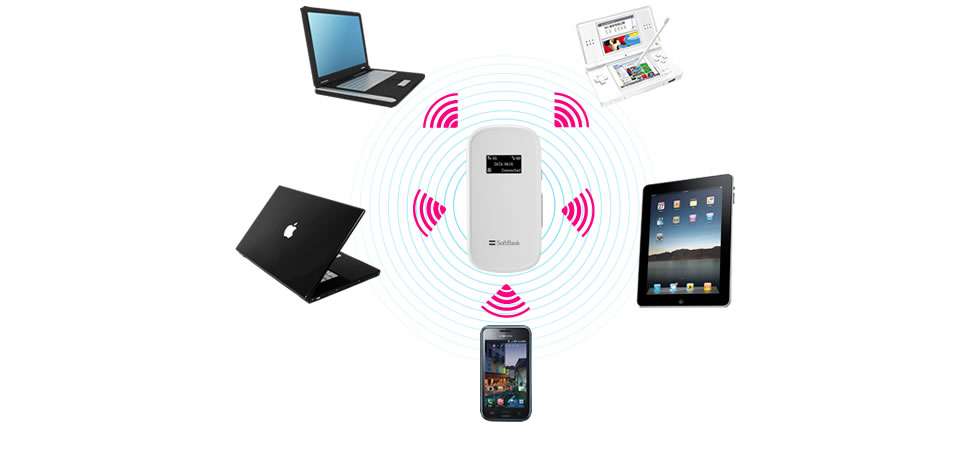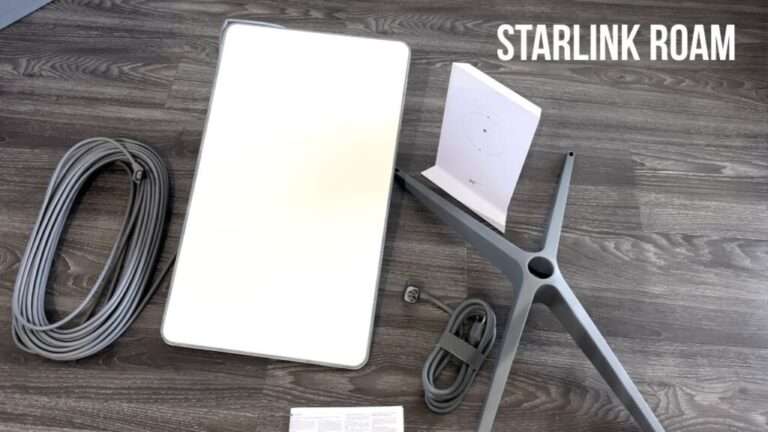As a digital nomad, staying connected is essential to your work and lifestyle. Whether you’re navigating a new city, working from a remote location, or hopping between countries, reliable internet access is a lifeline. While local SIM cards and data plans are common solutions, pocket WiFi has gained popularity as a versatile alternative. But what exactly is pocket WiFi, and is it the right choice for you? This comprehensive guide will explore everything you need to know about pocket WiFi, from its benefits and limitations to practical tips and frequently asked questions.
What is Pocket WiFi?
Pocket WiFi is a compact, portable device that provides wireless internet access by creating a personal WiFi hotspot. It connects to cellular networks, just like your smartphone, and converts that signal into a WiFi network that you can share with your devices—laptops, tablets, smartphones, and more. Think of it as a mobile router that fits in your pocket, giving you the freedom to connect to the internet wherever you go. This technology is especially beneficial for digital nomads who need consistent, high-speed internet access while traveling.
What is Better, eSIM or Pocket WiFi?
Choosing between eSIMs and pocket WiFi depends on your travel habits, connectivity needs, and budget. Here’s a deeper look:
- eSIM: eSIMs (embedded SIMs) are integrated into your smartphone, allowing you to switch between mobile networks without changing a physical SIM card. They are ideal for travelers who want to avoid the hassle of carrying extra devices. eSIMs often offer competitive pricing and are easy to manage through apps, making them a convenient option for light data users. However, eSIMs rely on your phone’s battery and data plan, which could be limiting if you need to connect multiple devices or require substantial data.
- Pocket WiFi: Pocket WiFi is better suited for those who need to connect multiple devices simultaneously or require large amounts of data. These devices often come with generous data allowances, and you can share the connection with friends or colleagues. Pocket WiFi also allows for better flexibility in remote areas where mobile coverage may be inconsistent. On the downside, pocket WiFi requires charging and carrying an additional device, which might not be ideal for minimalists or those who prefer to travel light.
Is Pocket WiFi Still Worth It for Digital Nomads?
Pocket WiFi remains a valuable tool for digital nomads, particularly those who frequently travel to regions with unreliable or expensive mobile networks. While eSIMs and local data plans have become more accessible and affordable, pocket WiFi offers distinct advantages:
- Reliable Connection: Pocket WiFi devices often provide a more stable connection, particularly in areas with weak mobile signals.
- Multiple Devices: If you need to connect multiple devices simultaneously, pocket WiFi is a practical solution. This is particularly useful if you’re working with a team or using multiple gadgets like a laptop, tablet, and phone.
- Data Flexibility: Pocket WiFi plans typically offer higher data limits or even unlimited data, which is crucial if your work involves heavy data usage like video conferencing, uploading large files, or streaming.
What Does Pocket WiFi Do?
Pocket WiFi creates a secure, portable WiFi network by converting a cellular data connection into a WiFi signal. Here’s how it works:
- SIM Card Installation: Most pocket WiFi devices require a SIM card, which connects to the local cellular network.
- WiFi Network Creation: The device then converts this cellular connection into a WiFi signal, creating a personal hotspot.
- Device Connection: You can connect your devices to this hotspot just as you would with any other WiFi network. Multiple devices can connect simultaneously, making it ideal for sharing with others.
Can I Use My Pocket WiFi Overseas?
Yes, you can use your pocket WiFi overseas, but there are a few things to consider:
- Device Compatibility: Ensure your pocket WiFi device is unlocked and compatible with international SIM cards. Some devices are restricted to specific regions or carriers.
- Data Plans: Check if your data plan offers international coverage or if you need to purchase a local SIM card in each country. Some pocket WiFi providers offer global plans that work across multiple countries, which can be more convenient.
- Roaming Fees: Be mindful of potential roaming fees if your device uses a SIM card tied to a specific country. Global SIM cards or plans tailored for international travel can help avoid these costs.
What is the Best Pocket WiFi for International Travelers?
Choosing the best pocket WiFi device depends on your specific needs, travel destinations, and budget. Here are a few top options:
- Skyroam Solis: Known for its global coverage, Skyroam Solis offers connectivity in over 130 countries. It uses virtual SIM technology, meaning you don’t need to swap physical SIM cards. The device also doubles as a power bank, making it a versatile choice for travelers.
- GlocalMe G4 Pro: This device offers 4G LTE connectivity without requiring a physical SIM card, thanks to its virtual SIM technology. It supports multiple networks and provides a user-friendly touchscreen interface, making it easy to manage your data and connections.
- TP-Link M7350: A budget-friendly option, the TP-Link M7350 supports 4G LTE and can connect up to 10 devices simultaneously. It’s compact, with a long-lasting battery and microSD card slot for sharing files on your network.
When choosing a device, consider factors such as coverage, battery life, ease of use, and data plan options.
Do You Need a SIM Card for Pocket WiFi?
Most pocket WiFi devices require a SIM card to connect to mobile networks, but there are exceptions:
- SIM-Based Devices: These devices use a physical SIM card, which you can swap out depending on your location. This flexibility allows you to purchase local SIM cards for the best rates in each country.
- Virtual SIM Devices: Some modern pocket WiFi devices, like the Skyroam Solis and GlocalMe, use virtual SIM technology. These devices don’t require a physical SIM card and can connect to multiple networks worldwide without any manual intervention.
Is Pocket WiFi Free?
No, pocket WiFi is not free. Here’s what you can expect in terms of costs:
- Device Purchase or Rental: You’ll need to either purchase or rent the pocket WiFi device. Purchase prices range from $50 to $300, depending on the model and features. Rental fees vary, with daily rates typically between $5 and $15.
- Data Plans: In addition to the device, you’ll need a data plan. Costs vary depending on the provider, data limit, and whether you’re using the device domestically or internationally. Some plans offer unlimited data, while others charge per gigabyte.
How Safe is Pocket WiFi?
Pocket WiFi offers a higher level of security compared to public WiFi networks, but there are still some considerations:
- Password Protection: Always set a strong, unique password for your pocket WiFi network to prevent unauthorized access.
- Encryption: Ensure your device supports WPA2 or higher encryption standards. This will help protect your data from potential hackers.
- Private Network: Unlike public WiFi, which is open to anyone, pocket WiFi creates a private network that only you and those you share the password with can access.
Does Pocket WiFi Need Electricity?
Yes, pocket WiFi devices run on rechargeable batteries and need electricity to function. Here’s what you should know:
- Battery Life: Battery life varies by model, ranging from 6 to 15 hours of continuous use. Some devices also function as power banks, allowing you to charge your other devices on the go.
- Charging: Most pocket WiFi devices charge via USB, so you can recharge them using a portable power bank, laptop, or wall outlet. It’s essential to keep your device charged, especially if you’re relying on it for work.
How Long Do Pocket Wifis Last?
The longevity of a pocket WiFi device depends on several factors:
- Battery Life: On a single charge, most pocket WiFi devices last between 6 to 15 hours. Over time, the battery’s capacity will diminish, similar to smartphones, which may reduce its overall usability.
- Device Lifespan: With proper care, a pocket WiFi device can last several years. However, technological advancements and wear and tear may prompt you to upgrade sooner.
Can You Use Your Phone as a Pocket WiFi?
Yes, most smartphones can act as a portable WiFi hotspot, but there are some limitations:
- Battery Drain: Using your phone as a hotspot consumes a significant amount of battery, which can be problematic if you’re away from a power source.
- Data Limits: Hotspot usage typically counts against your mobile data plan. If you have a limited data allowance, this could result in overage charges.
- Connectivity: While convenient, your phone’s hotspot might not provide as stable or fast a connection as a dedicated pocket WiFi device, especially if you’re connecting multiple devices.
Does Pocket WiFi Have a Limit?
Yes, pocket WiFi devices usually come with data limits, though this varies by provider and plan:
- Data Caps: Some pocket WiFi plans have a fixed data limit, after which your speeds may be throttled or additional charges applied.
- Unlimited Plans: Some providers offer unlimited data plans, but it’s essential to read the fine print. These plans often have a “fair use” policy that may reduce speeds after reaching a certain threshold.
Is Pocket WiFi Better Than Phone Data?
Pocket WiFi can be better than phone data in several scenarios:
- Multiple Devices: If you need to connect multiple devices simultaneously, pocket WiFi is more efficient than tethering with your phone.
- Data Allowance: Pocket WiFi plans often offer more data than typical mobile plans, making them ideal for heavy data users.
- International Travel: Pocket WiFi provides more flexibility for international travel, especially with devices that support global SIM cards or virtual SIM technology.
However, if you only need to connect one device and have a robust mobile data plan, using your phone might be more convenient.
Tips for Using Pocket WiFi
To get the most out of your pocket WiFi device, consider these tips:
- Check Coverage: Before traveling, research the mobile networks in your destination to ensure your pocket WiFi device will have strong coverage. Not all devices work equally well in every country.
- Monitor Data Usage: Keep an eye on your data consumption, especially if you’re on a capped plan. Some devices have built-in displays or apps that show your usage in real time.
- Optimize Battery Life: Turn off your pocket WiFi device when not in use, reduce the number of connected devices, and lower the screen brightness (if applicable) to extend battery life.
- Secure Your Network: Always set a strong password and enable encryption to protect your network from unauthorized access.
- Carry a Power Bank: Since pocket WiFi devices rely on batteries, having a portable charger can be a lifesaver if you run out of juice during the day.
- Update Software: Regularly check for firmware updates for your pocket WiFi device. These updates can improve performance, fix bugs, and enhance security.
Pros and Cons of Pocket WiFi for Digital Nomads
Pros:
- Multi-Device Connectivity: Allows multiple devices to connect simultaneously, making it ideal for teams or those with multiple gadgets.
- High Data Limits: Pocket WiFi plans often offer more data than mobile plans, which is crucial for heavy users.
- International Flexibility: Many pocket WiFi devices are compatible with global networks, providing reliable internet access in various countries.
- Security: Provides a private WiFi network, which is generally safer than public WiFi.
- Long Battery Life: Many devices offer extended battery life, allowing you to stay connected throughout the day.
Cons:
- Additional Device: Requires carrying and managing an extra device, which might be inconvenient for minimalists.
- Charging Needs: Pocket WiFi devices need regular charging, which can be a hassle if you’re on the move without access to power.
- Cost: Purchasing or renting a pocket WiFi device and paying for data plans can be more expensive than using a local SIM card or mobile data plan.
- Variable Performance: Connection quality can vary depending on the local network and the device’s compatibility with regional frequencies.
15 Frequently Asked Questions About Pocket WiFi for Digital Nomads
Can I use pocket WiFi in rural areas?
Yes, you can use pocket WiFi in rural areas, but the quality of the connection will depend on the strength of the local cellular network. In rural or remote areas, cellular coverage can be spotty or weak, which may result in slower internet speeds or intermittent connectivity. If you plan to work from rural locations frequently, it’s a good idea to check the coverage maps of the service providers in the area beforehand or choose a pocket WiFi device that supports multiple network bands and can switch to the strongest available signal.
How do I know if my pocket WiFi device is compatible with a local SIM card?
To ensure your pocket WiFi device is compatible with a local SIM card, check the device specifications for supported frequencies, bands, and networks. These details are usually found in the user manual or on the manufacturer’s website. It’s crucial that your device is unlocked, meaning it’s not restricted to a single carrier, so you can use SIM cards from different carriers in various countries. Additionally, some devices support both physical SIM cards and virtual SIM technology, which can be more versatile for international travel.
What happens if I exceed my data limit?
If you exceed your data limit on a pocket WiFi plan, several things can happen depending on your provider and the type of plan you have. Some providers will throttle your internet speed, meaning your connection will become significantly slower until the next billing cycle. Others may charge overage fees, which could quickly add up, especially if you continue using data heavily. Unlimited plans often come with a fair use policy, where after consuming a certain amount of data, your speeds might be reduced to prevent network congestion. It’s important to monitor your data usage to avoid unexpected costs or disruptions.
Is it difficult to set up pocket WiFi?
Setting up pocket WiFi is generally straightforward and user-friendly. Typically, you start by inserting a SIM card into the device, powering it on, and then connecting your gadgets (like laptops, tablets, or smartphones) to the new WiFi network that the device broadcasts. Most pocket WiFi devices will have a pre-set network name (SSID) and password, which you’ll need to enter on your devices to connect. Many devices also come with an accompanying app or web interface that allows you to manage settings, monitor data usage, and perform firmware updates easily.
Can I use pocket WiFi on a plane?
No, you cannot use pocket WiFi on a plane. Airlines prohibit the use of devices that emit a cellular signal during flights, which includes pocket WiFi. The reason for this restriction is to avoid interference with the aircraft’s communication and navigation systems. However, some airlines offer in-flight WiFi services, which you can connect to using your devices during the flight. It’s always a good idea to check the airline’s specific regulations on electronic devices before flying.
Do I need a specific app to manage my pocket WiFi?
While not always necessary, using a specific app to manage your pocket WiFi can enhance your experience. Many pocket WiFi devices come with a companion app provided by the manufacturer. These apps allow you to monitor data usage in real-time, change the network name and password, view connected devices, and update the device’s firmware. If your device supports multiple languages or network profiles, the app might also simplify switching between them. However, basic functions like connecting to the WiFi network or checking battery life can usually be done directly on the device itself.
Can pocket WiFi work without a SIM card?
Some pocket WiFi devices can work without a physical SIM card if they use virtual SIM technology. These devices, such as the Skyroam Solis or GlocalMe, connect to the internet by automatically selecting the best available network through cloud-based virtual SIM services. This eliminates the need to manually insert or swap SIM cards when traveling between countries. However, traditional pocket WiFi devices still require a physical SIM card to connect to cellular networks, so it’s important to know what type of device you have.
Is pocket WiFi safe for online banking?
Yes, pocket WiFi is generally safe for online banking, provided that you take basic security precautions. Unlike public WiFi networks, which are often unsecured and open to anyone, pocket WiFi creates a private network that only you and those you share the password with can access. This reduces the risk of hacking and data theft. To further enhance security, ensure that your pocket WiFi network is password-protected with a strong, unique password and that the device uses WPA2 or WPA3 encryption. Additionally, always log out of your online banking session when finished and consider using a VPN for an extra layer of protection.
What should I do if my pocket WiFi stops working?
If your pocket WiFi stops working, start by troubleshooting common issues. First, try restarting the device by turning it off and on again. Check that the SIM card is properly inserted and that the device has a sufficient charge. If you’re in an area with poor signal strength, try moving to a different location or closer to a window for better reception. If these steps don’t resolve the issue, you may need to reset the device to factory settings or update the firmware. If the problem persists, contacting your service provider for support is the next best step, as there could be issues with the network or the SIM card.
Can I use pocket WiFi in multiple countries without changing SIM cards?
You can use pocket WiFi in multiple countries without changing SIM cards if your device supports global or virtual SIM technology. Devices like Skyroam Solis or GlocalMe are designed for international travel and can automatically connect to local networks in different countries without the need to swap SIM cards. These devices use a cloud-based virtual SIM that works across various regions. However, if your pocket WiFi device relies on a physical SIM card, you may need to purchase a new SIM card in each country or use an international SIM card that covers multiple countries.
How do I recharge my pocket WiFi?
Recharging your pocket WiFi device is simple and similar to charging a smartphone. Most pocket WiFi devices come with a USB charging cable that can be plugged into a wall adapter, laptop, or portable power bank. It’s important to use the correct charger recommended by the manufacturer to avoid damaging the battery. The charging time will vary depending on the device and the power source, but it generally takes 2 to 4 hours for a full charge. If you’re on the go, carrying a portable power bank can be a convenient way to ensure your pocket WiFi stays charged throughout the day.
Will pocket WiFi slow down if too many devices connect?
Yes, the speed of your pocket WiFi can slow down if too many devices connect simultaneously. Pocket WiFi devices share the available bandwidth among all connected devices, so the more devices you connect, the less bandwidth each device will have. This can lead to slower internet speeds, especially if multiple devices are streaming videos, downloading large files, or engaging in other data-intensive activities. To maintain optimal speeds, try to limit the number of connected devices or prioritize essential activities on fewer devices.
What’s the range of a pocket WiFi signal?
The WiFi signal range of a pocket WiFi device typically extends up to 10 to 15 meters (about 33 to 50 feet) from the device, depending on the environment. This range is similar to that of a standard home WiFi router. However, physical obstacles like walls, floors, and furniture can reduce the effective range. If you need to extend the range, some pocket WiFi devices support WiFi extenders or repeaters, which can help boost the signal in larger spaces. It’s also a good idea to place the device in an open, central location to maximize coverage.
Can I share my pocket WiFi connection with friends?
Yes, you can share your pocket WiFi connection with friends by giving them the network name (SSID) and password. Pocket WiFi devices are designed to support multiple connections, typically ranging from 5 to 10 devices at once, though some models may allow even more. Keep in mind that sharing the connection will divide the available bandwidth among all users, which can slow down the internet speed if many people are using the network simultaneously. It’s also important to monitor your data usage, especially if you’re on a limited plan, to avoid exceeding your data allowance.
Is pocket WiFi waterproof?
Most pocket WiFi devices are not waterproof and should be kept away from water, rain, and moisture. Water exposure can damage the internal components, leading to malfunctions or complete failure of the device. If you need to use your pocket WiFi in places where it might get wet, consider purchasing a waterproof case or plastic bag to protect it. Alternatively, there are rugged models available that offer water resistance and are designed for more extreme conditions, but these tend to be more expensive. Always check the manufacturer’s specifications for water resistance before exposing the device to potentially wet environments.
Final Thoughts on Pocket WiFi for Digital Nomads
Pocket WiFi continues to be a reliable and flexible option for digital nomads who need consistent internet access across multiple devices and locations. While eSIMs and mobile data plans offer convenience, pocket WiFi stands out for its ability to provide a dedicated, secure connection with higher data limits. By understanding the pros and cons, along with practical tips for using pocket WiFi, you can make an informed decision about whether it’s the right solution for your digital nomad lifestyle.
Safe Travels!






